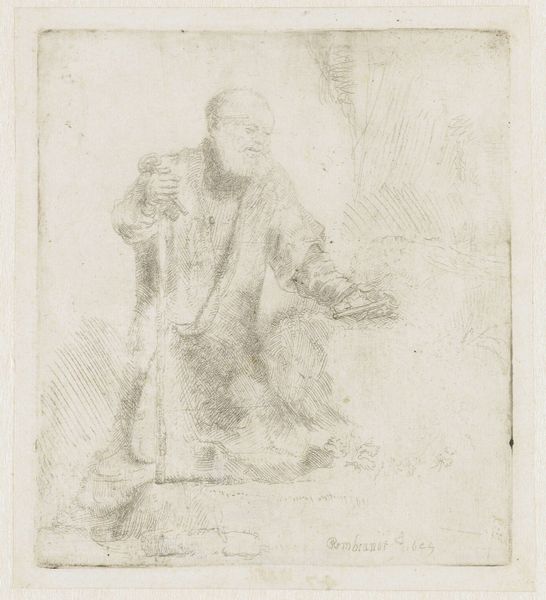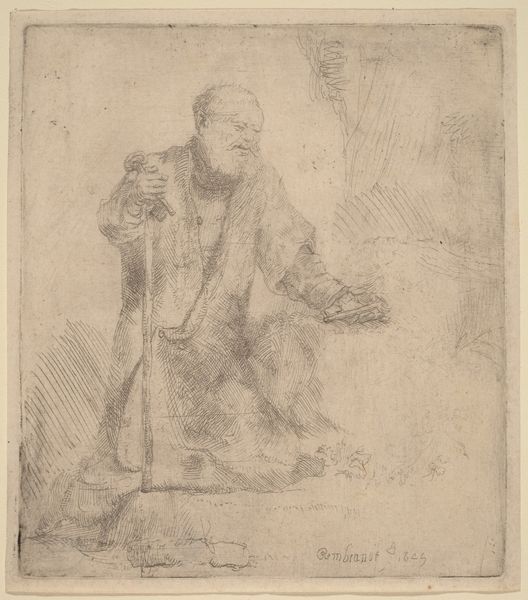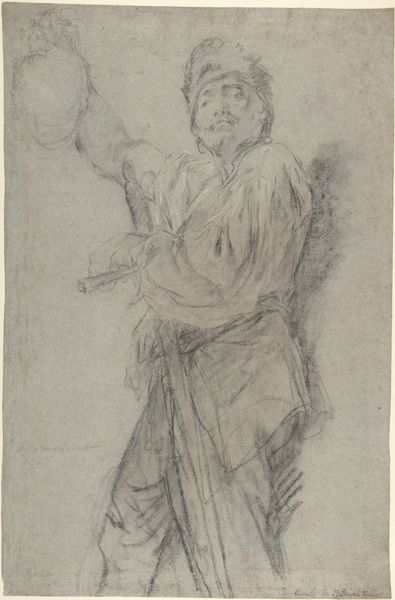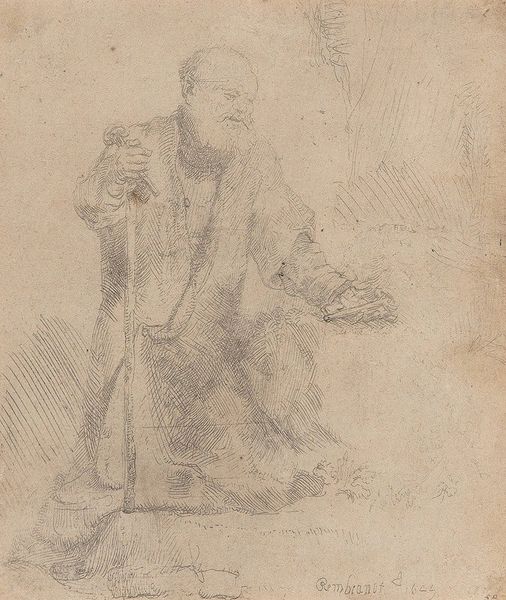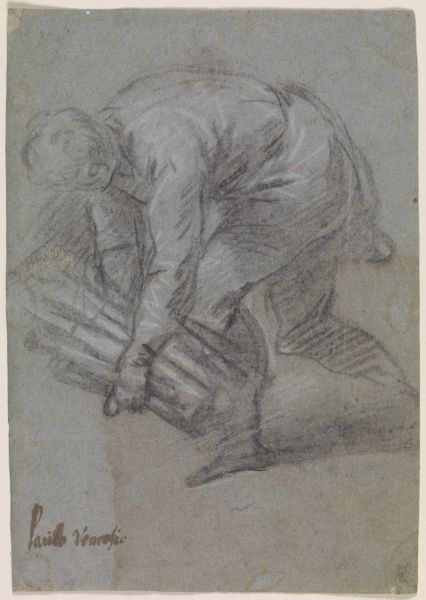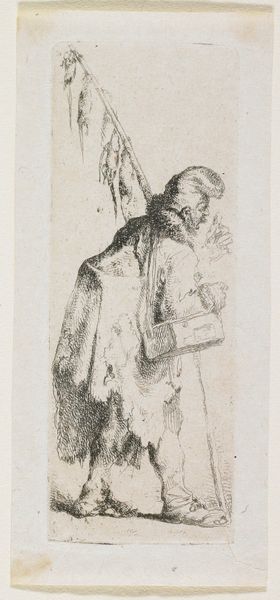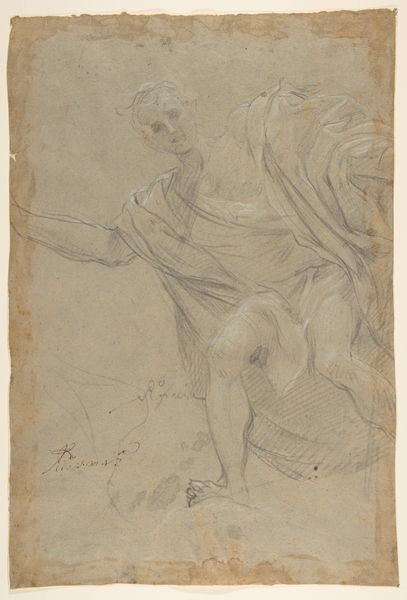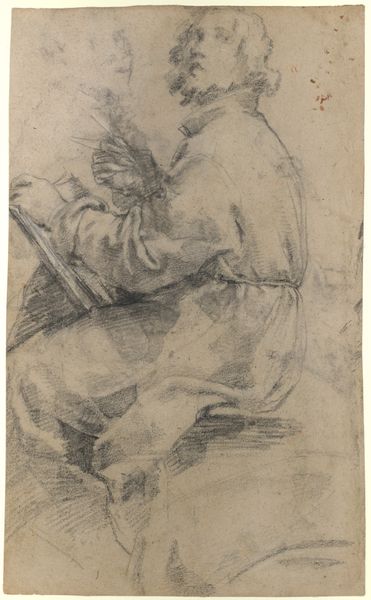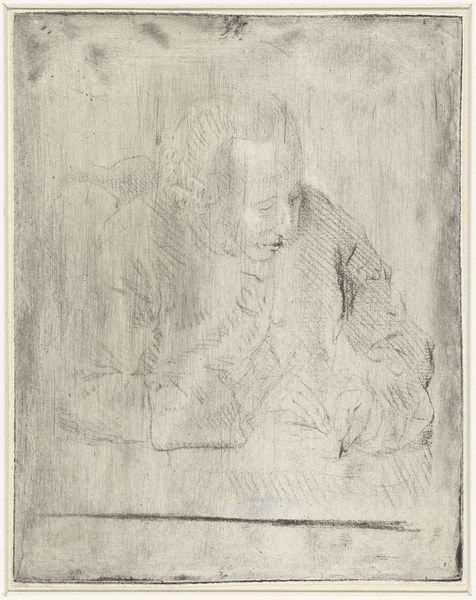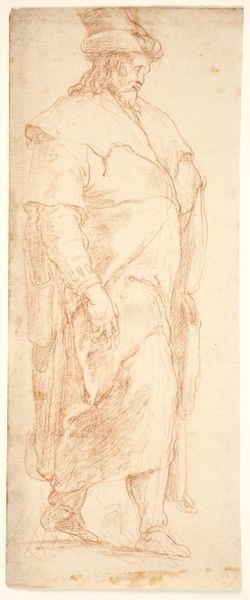
drawing, print, etching, paper, ink
#
portrait
#
drawing
#
narrative-art
#
baroque
# print
#
etching
#
figuration
#
paper
#
ink
#
chiaroscuro
#
history-painting
Copyright: Public domain
Curator: Oh, my goodness, this has such a raw, aching feel to it. He just *reeks* of regret. Editor: Indeed. This etching, created by Rembrandt van Rijn in 1645, is titled "St. Peter in Penitence." The image is rendered in ink on paper. It is quite remarkable how the master depicts raw emotion with such sparse means. Curator: "Sparse" is the perfect word. It's almost a whisper of an image, but you can feel the weight of the world on him. I see a figure hunched over, the shadows seeming to cling to him like remorse, using this Baroque, chiaroscuro light. What strikes you as iconic here? Editor: The keys of Saint Peter, almost cast aside to his side, immediately come to mind. They are emblems of his authority, promise, and status, all of which he momentarily relinquished when he denied Christ. Note also his posture. Kneeling was a mark of humility but slumped down like this, his vulnerability, naked and utterly human, as you've pointed out, overwhelms all else. Curator: Exactly. There is this profound paradox there. I think of his keys of salvation—rendered useless or unreachable in a moment of weakness. The staff too, which symbolizes journey or pilgrimage, is now just leaning; an additional layer of abandoned ambition. His world, that we, as viewers see it through the work's medium as simple narrative art, has turned dark and hopeless. Editor: And isn't that, perhaps, Rembrandt’s most enduring contribution? The peeling away of the ideal, or what society expects and demands of you, revealing what we all keep locked away inside—vulnerability and potential. The chiaroscuro not only brings the figure into focus, but seems to emphasize how far the light has faded, almost abandoning him in the depth of his failure. Curator: A very Dutch sentiment if you ask me! Honesty and a no-fuss way of painting is pretty powerful when put this way, in portraiture. Editor: Agreed, what begins as a devotional picture quickly, powerfully, transforms into a meditation on human frailty. Curator: I leave this both moved, and strangely encouraged. Editor: As do I. The symbol is no longer external but has returned inward, ready to transform him.
Comments
No comments
Be the first to comment and join the conversation on the ultimate creative platform.
